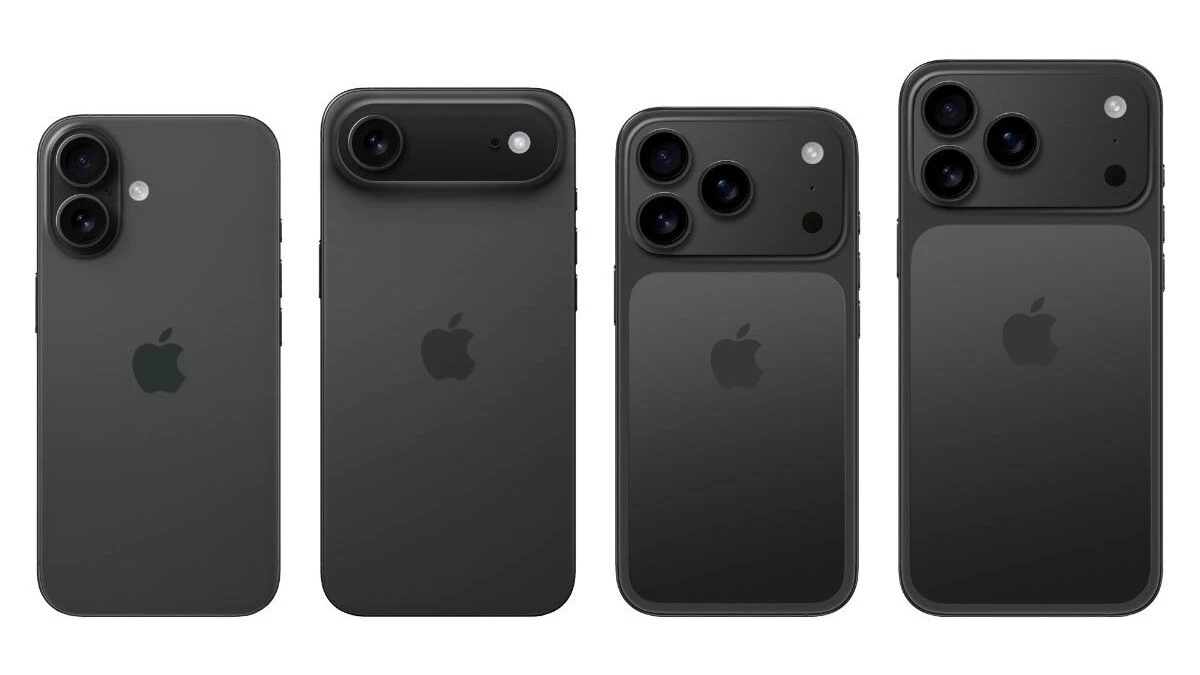Apple’s iPhone 17 lineup may not be as predictable as previously thought. In a fresh note, analyst Jeff Pu has revised his earlier forecast, offering new details that hint at an unexpected chip shuffle, a RAM boost for mid-tier models, and a sleeker front design for the entire range.
While earlier reports had suggested that every iPhone 17 would feature some version of the next-gen , Pu now claims that Apple will recycle the A18 chip-currently powering the iPhone 16-for the standard iPhone 17. The iPhone 17 Air, however, will reportedly get the upgraded A19 N3P, bringing it in line with the Pro and Pro Max models. This marks a shift from Pu’s previous stance, which had Apple unifying the lineup under the A19 series, with RAM being the key differentiator.
iPhone 17’s RAM and dynamic island
In what could be a move to make the new iPhone 17 Air more appealing to power users, Pu now says it will pack 12GB of RAM, matching the Pro models. Meanwhile, the regular iPhone 17 is expected to get 8GB, up from the 6GB seen in the iPhone 16.
This puts the Air in an interesting position, a mid-tier device with Pro-level performance chops but (presumably) a slightly lower price point. Apple may be carving out a sweet spot for users who want a little extra, without going all-in on the Pro Max.
Perhaps the most intriguing claim in Pu’s note is that Apple will introduce a new “metalens” technology across the entire iPhone 17 range. This tech, designed for the Face ID proximity sensor, could allow Apple to dramatically reduce the size of the sensor system-resulting in a smaller Dynamic Island for all models.
This update walks back Pu’s earlier prediction that the upgrade would be exclusive to the Pro Max. If true, the new design could bring a sleeker, more refined front-facing experience to the whole lineup. However, this view clashes with analyst Ming-Chi Kuo, who in January said the Dynamic Island design would be “largely unchanged” in the iPhone 17 range compared to the current generation.
Apple seems to be leaning further into stratifying its iPhone offerings-not just through camera setups and materials, but also through performance specs like chips and memory. The potential addition of the Air model, paired with metalens tech, could make the iPhone 17 family Apple’s most feature-diverse lineup to date.
As always, expect confirmation-or contradiction-at Apple’s keynote this autumn.
iPhone 17 series: What to expect
Apple’s upcoming iPhone 17 range is already stirring up excitement, with the spotlight firmly on the new iPhone 17 Air-a sleek, lighter device that seems to borrow from the iPad Air’s philosophy of blending style with substance. Slotted neatly between the base model and the Pro line, this newcomer aims to offer a sweet spot between performance and portability, making it ideal for those who want power without the bulk.
At the other end of the spectrum is the standard iPhone 17, which appears to be the most conservative of the bunch. While it may feature a slightly larger display, its overall look will remain largely familiar, sticking close to the design blueprint of the iPhone 16. There’s no radical redesign on the rear either, with the camera layout expected to remain unchanged.
One of the most welcome updates-across all four models-is the rumoured introduction of 120Hz ProMotion displays. Once an exclusive perk of the Pro variants, this silky-smooth refresh rate could finally become standard across the lineup, promising a far more fluid experience even for users of the base model.
Photography enthusiasts have something to cheer about too. A 24-megapixel front-facing camera is reportedly on the way, offering a significant improvement for selfies and video calls.
On the rear, the iPhone 17 Air and Pro models may be in for a design overhaul, with a horizontal camera bar tipped to replace Apple’s usual vertical arrangement. It’s a bold visual change that could give the devices a fresh new identity. The regular iPhone 17, however, is likely to stick with its classic dual-lens vertical setup, keeping things familiar for those who favour a more traditional look.
All signs point to Apple fine-tuning its strategy-offering greater distinction between models, while still ensuring meaningful upgrades across the board. Whether you’re eyeing the Air for its balance or the Pro for its power, the iPhone 17 series looks set to offer something for everyone.
